This is not a new thing.
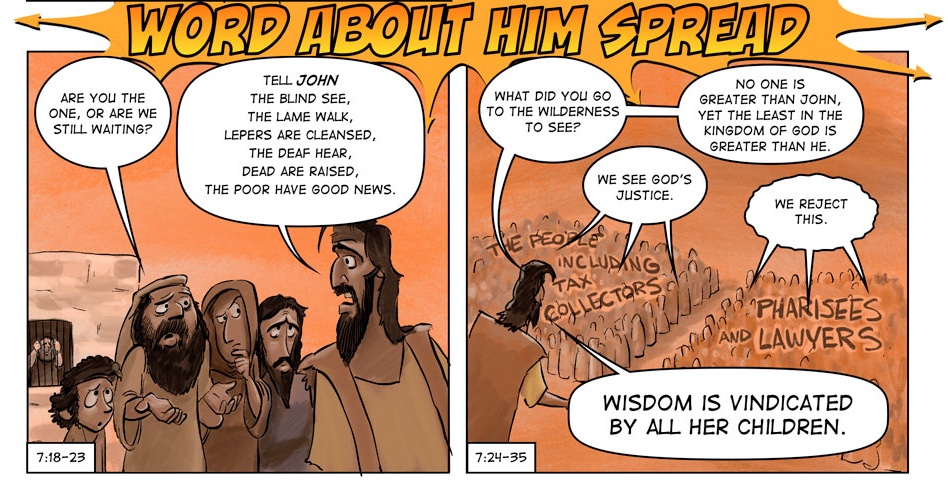
This image is from page 8 in A Cartoonist’s Guide to Luke
We see it happening in Jesus’ lifetime. I am currently studying the Gospel of Luke as both the Revised Common Lectionary (RCL) and the Narrative Lectionary (NL) are working through it in this Winter/Spring of 2025.
In the week that I write these words the RCL is spending two weeks in one section of Jesus’ sermon on the level place before it skips to the Transfiguration. The NL completely skipped the sermon and is spending three weeks on chapter 7.
I would like to take some time to look at the entire sermon as it relates to chapter 7. When we take these texts all together I think we can get a picture of what Jesus’ mission was about and find some help for our current American moment.
In Luke 7:35, Jesus said,
Wisdom is vindicated by all her children.
What does this mean and what does it have to do with being a disciple of Jesus in 2025?
Notice the two images below. They come from my illustration of the Gospel of Luke. I created this resource for exactly this purpose. It helps us see the narrative from a broader perspective.

This image is page 7 in A Cartoonist’s Guide to Luke

This image is page 8 in A Cartoonist’s Guide to Luke
Read Luke 7:18-35.
John was confused about Jesus. Apparently Jesus was not living up to John’s expectation of how the Messiah would behave. Jesus reminded John of the words from Isaiah 61:1-2 that Jesus proclaimed back in Nazareth to frame the start of his ministry. He was here to liberate the lowly and oppressed.
Jesus turns to the crowd and names their confusion. Some acknowledge John’s baptism of repentance and were accepting Jesus’ ministry of liberation. Others rejected both John and Jesus. They criticized John because of his radical austerity as he fasted in the wilderness. They criticized Jesus because he doesn’t fast and eats and drinks with “sinners.” They called him demon possessed and a drunkard.
How can two groups of people have such radically different views of the same story?
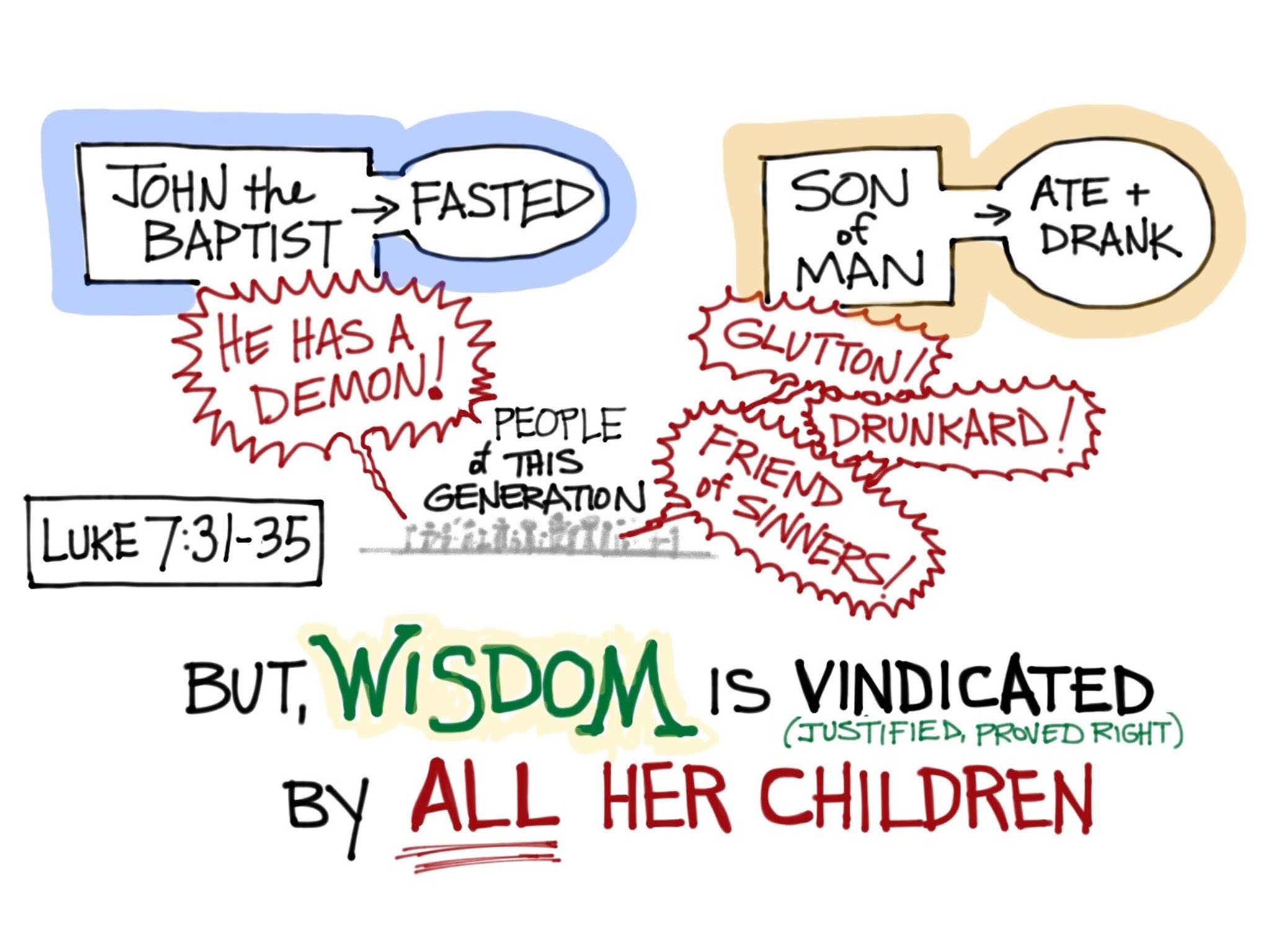
I think we are dealing with one of the core human questions. What is good and bad? How do we determine right from wrong? What is sin (and why are some Christians obsessed with the word and others avoid it completely)?
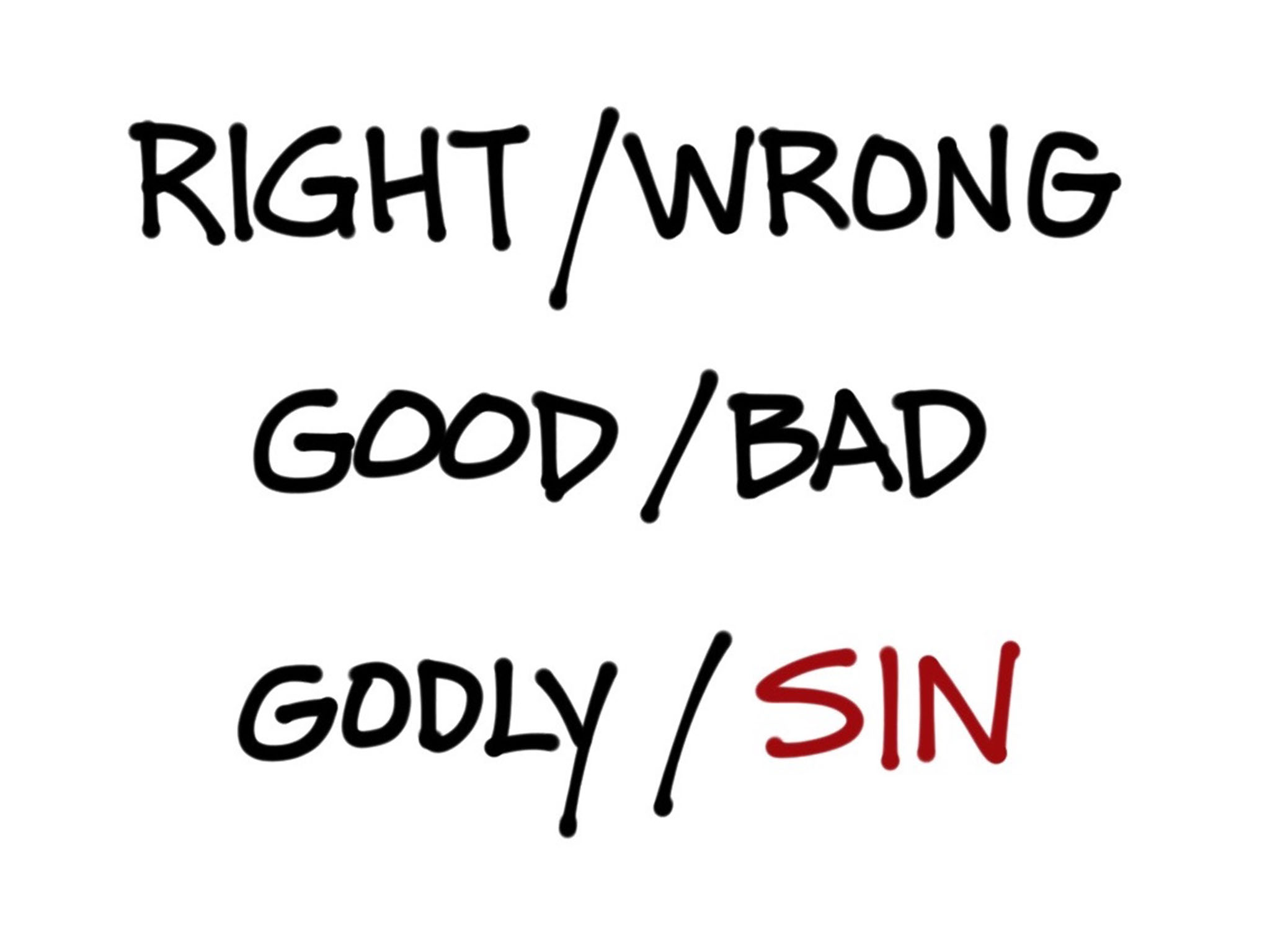
This is why it is important to look at Jesus’ sermon in Chapter 6 and the stories of Chapter 7 together.
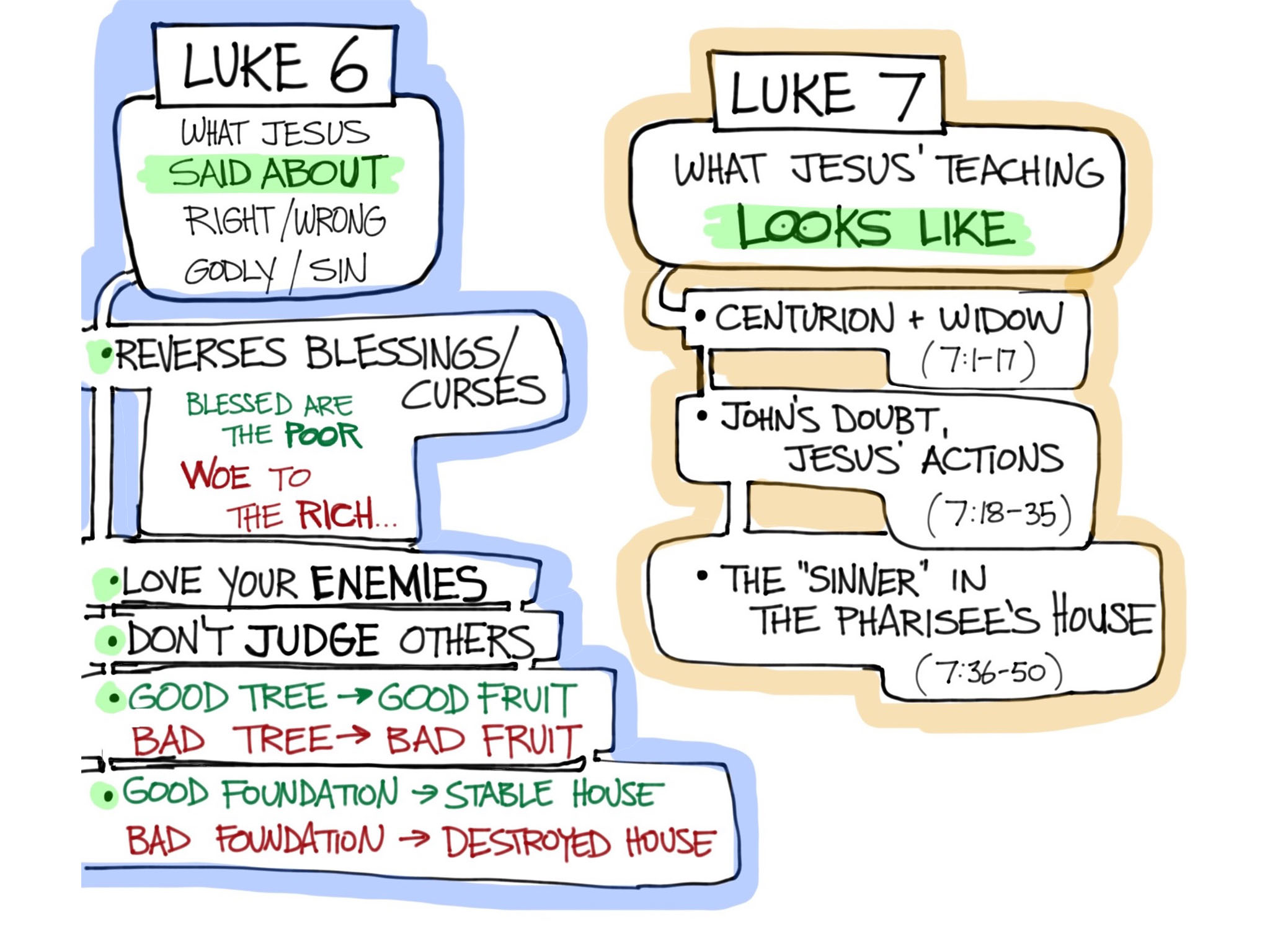
Chapter 6 provides Jesus’ teaching ABOUT right and wrong. Jesus reverses the conventional wisdom. He blesses the down-and-outers and curses the exalted. He says to love your enemies, not judge your neighor. Why? Because goodness is not determined by external status markers (riches, success, power), but by the intent of the heart. Good trees produce good fruit and a life built on the wisdom of God stands strong.
Chapter 7 demonstrates what Jesus’ teaching looks like lived out: the Centurion’s faith, Jesus’ compassion on the widow, John’s doubt in contrast to Jesus’ compassion, and the woman who anoints Jesus’ feet in the Pharisee’s house.
Let’s take a moment to speak theologically about the term sin.
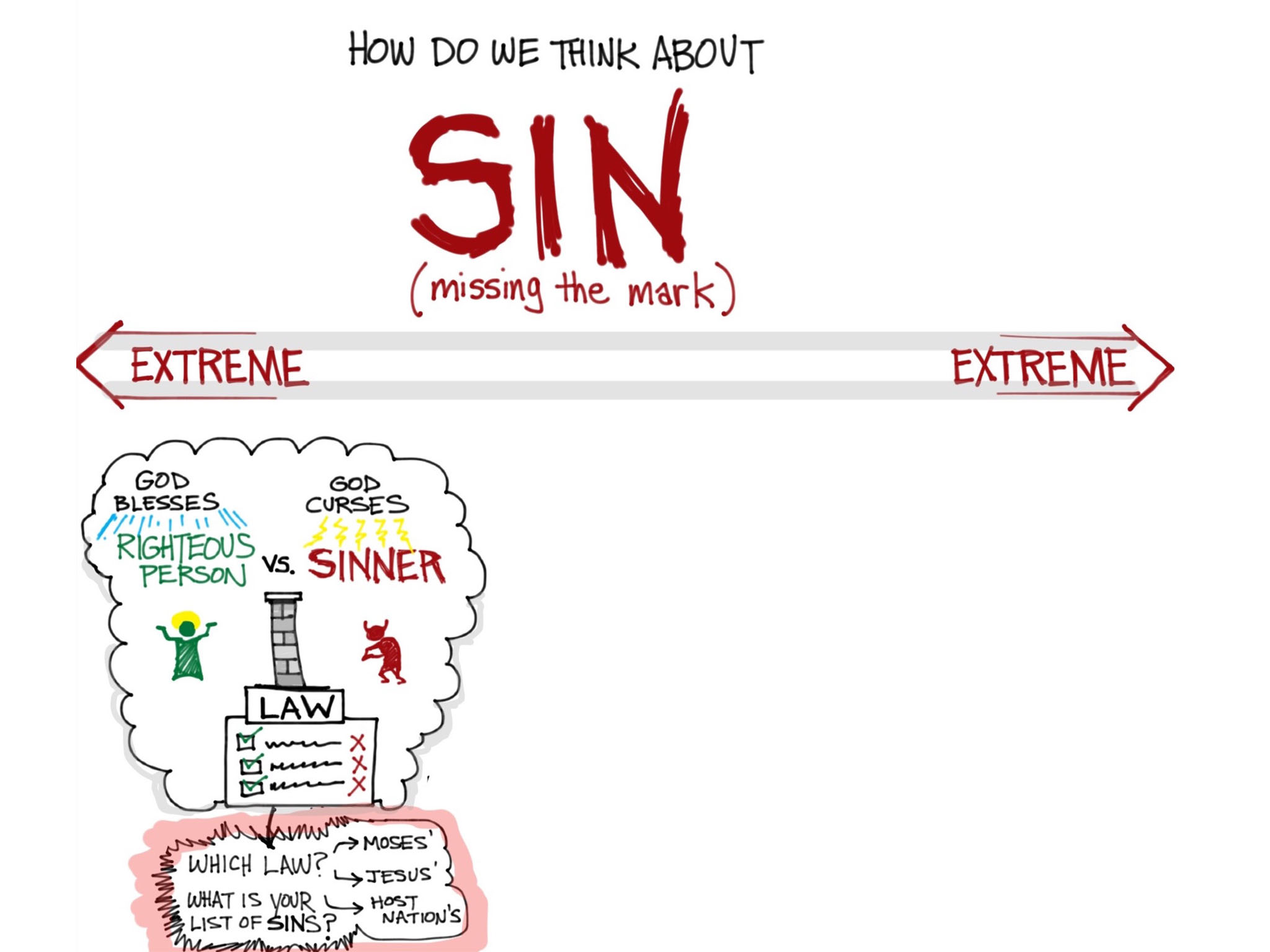
This is an important topic in our society. How do we think about sin? On one side, some people make it about the “righteous person” vs. the “sinner.” It is us against them. The “us” is determined by a list of rules and behaviors that define “righteous” and the “them” is defined by those who don’t follow the list.
Here’s the irony of that view. It all depends upon the list you are using as to who is “righteous” and who is a “sinner.” We see this in the conservative vs. liberal polarization in our nation. “Liberals” are sinners in the eyes of the conservative and “Conservatives” are sinners in the eyes of the liberal.

Jonathan Haidt calls this the Moral Foundations Theory. He demonstrates how “liberals,” “libertarians,” and “conservatives” have different sets of morality lists based on cultural norms. It is fascinating. See this commentary for more.
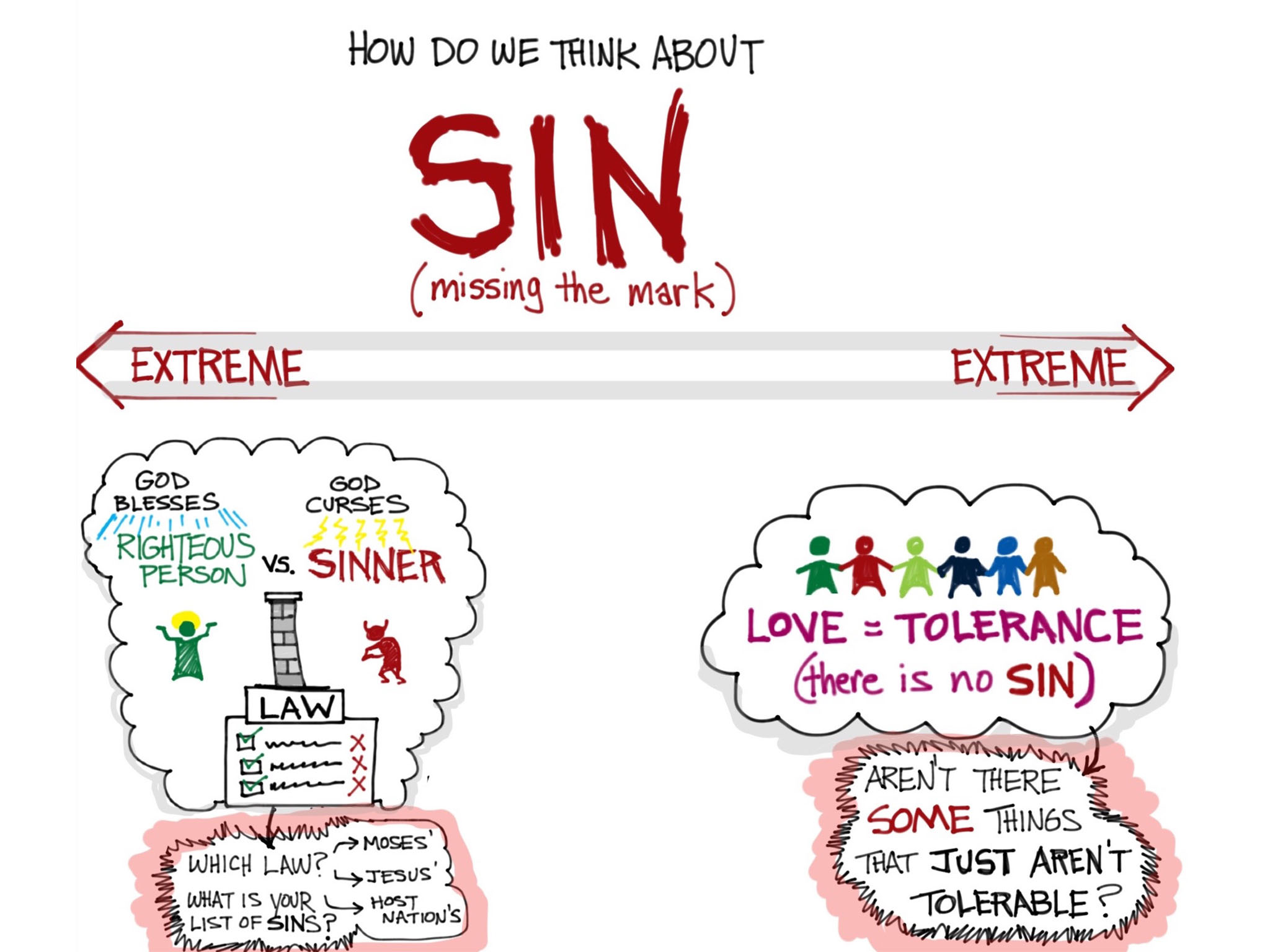
Then, on the other end of the spectrum, there are those who believe that the concept of “sin” is not helpful. They suggest we focus only on God’s unconditional love. We must love and accept everyone, just the way they are. There is no need to say someone should change, or hold people accountable for their behavior, because everyone is perfect just they way they are.
Love gets reduced to tolerance.
The problem with this view is that…really? We will accept any and all behavior? I don’t think anyone actually lives that way.
We all–or at least it seems to me that most people–have lines we feel necessary to draw regarding behavior that is not acceptable to us, based upon what we believe is right and wrong. The lines just happen to be drawn in different places depending upon the list of rules that govern our “right” and “wrong” sensibilities. “Those” sinful people are sinful because they crossed “our” moral boundaries.
Our nation is currently divided because we have drawn hard boundaries between us and them. Each side is claiming a “Christian” value system. Each side is easily tempted to villify and dehumanize the other side.
All the while, it seems that the “sides” are comprised of very powerful people who are arguing with each other while the people who have no power and are the most vulnerable among us get trampled on or disregarded in the process.
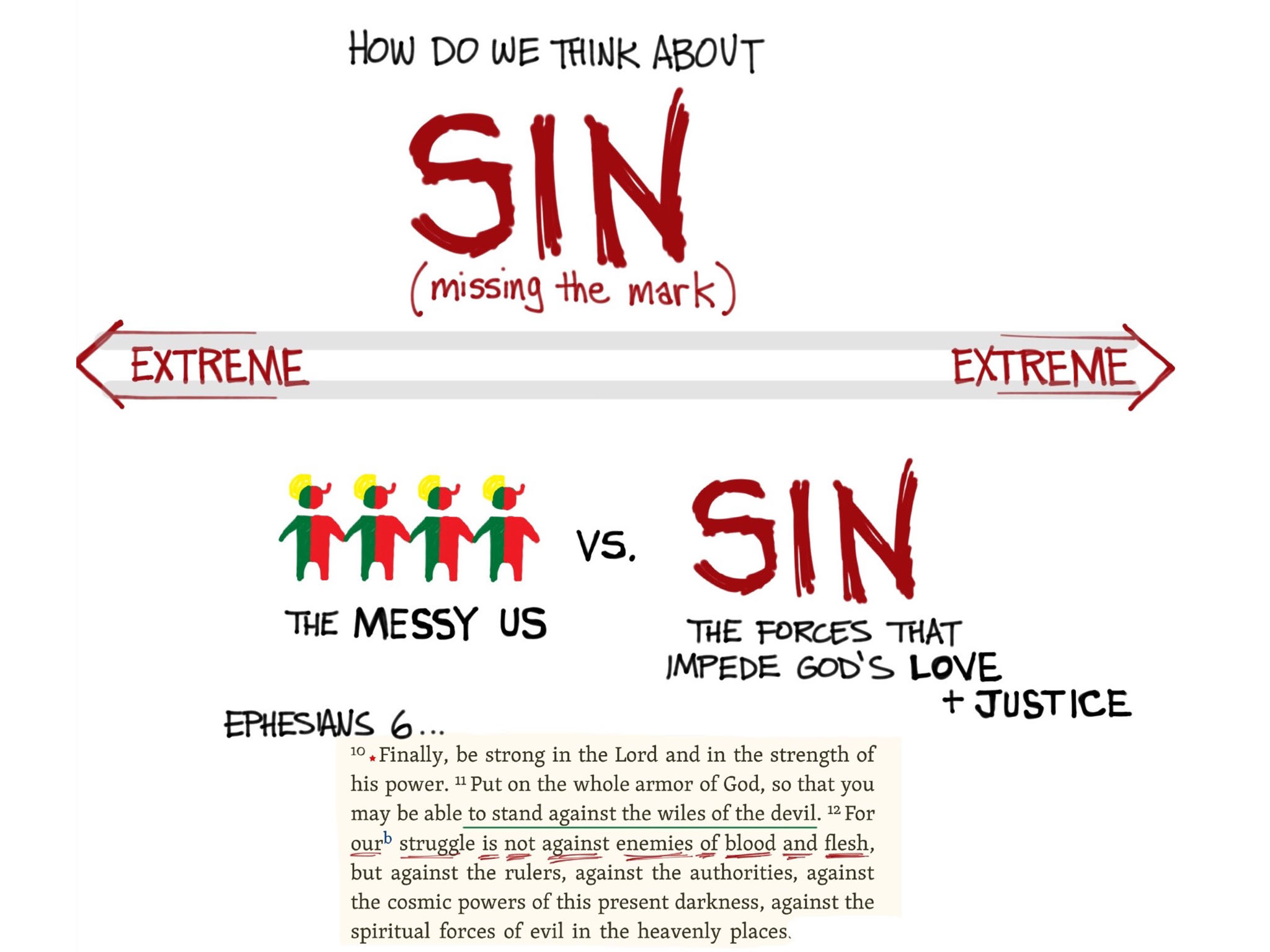
What if there is a third way?
What if it isn’t “us vs. them” but is “us vs. Sin?” We–all of humanity–are a messy, mixed bag of righteous and sinful people. Martin Luther said that we are simultaneously saint and sinner. The Apostle Paul said, in Ephesians 6:10-12 that our enemy is not other humans (flesh and blood) but our struggle is against the forces of evil at work in the world. We must all stand against Sin and help each other to be set free from the chains of destructive behavior of all kinds.
Back to Jesus’ story
Luke illustrates Jesus’ comment about Wisdom being vindicated by all her children by telling the story of the woman who anointed Jesus’ feet while he was eating in the home of a Pharisee (Luke 7:36-50)

This is an awkward situation. A man who considers himself righteous because he obeys the Law of Moses invites Jesus, the alleged prophet and/or Messiah into his home, only to be invaded by a sinner. Her presence makes the whole dinner unclean, according to the Pharisees standards of right and wrong.
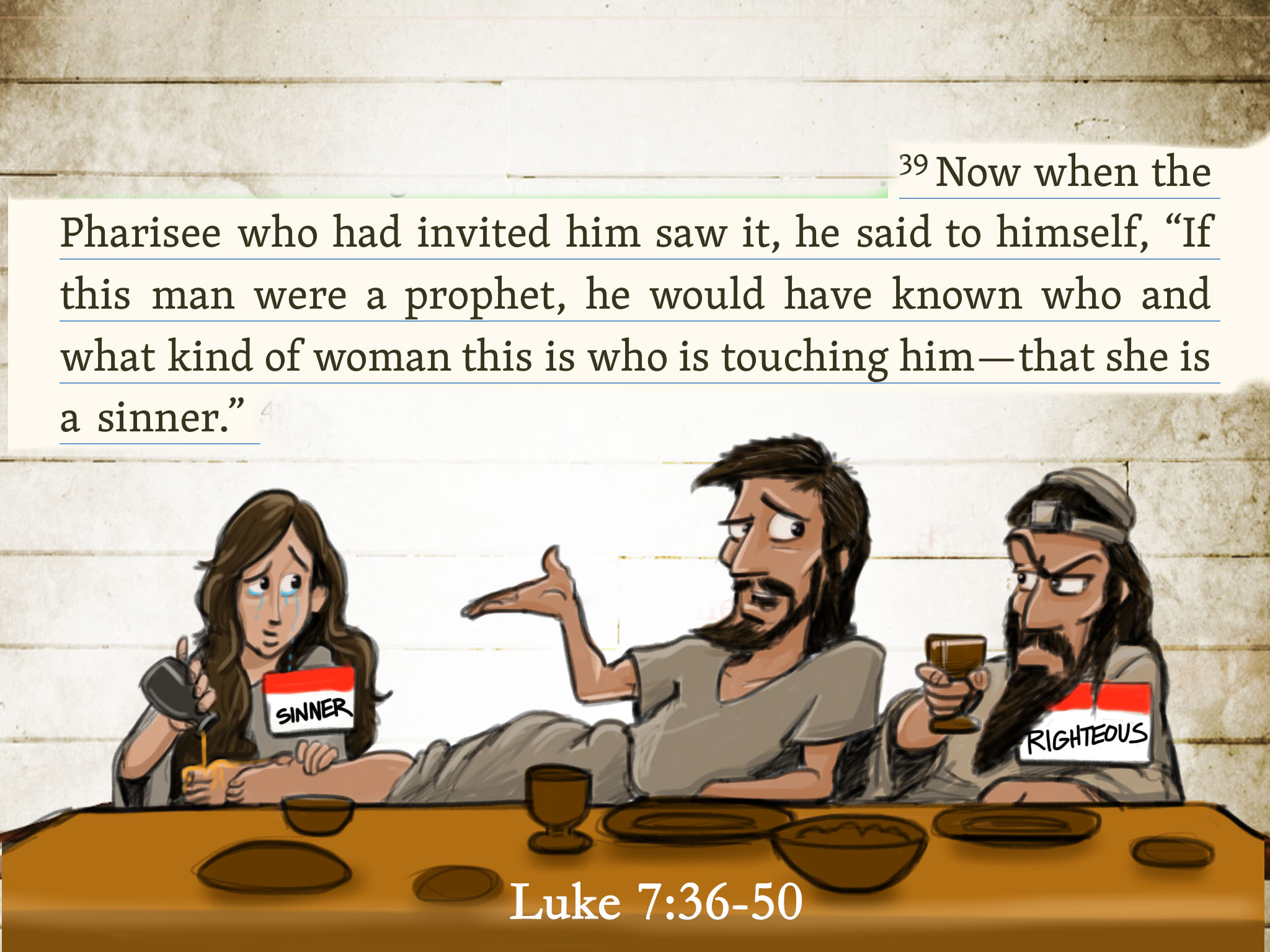
Jesus’ acceptance of the “sinner’s” touch brings his validity into question.
So, he tells the Pharisee this parable…
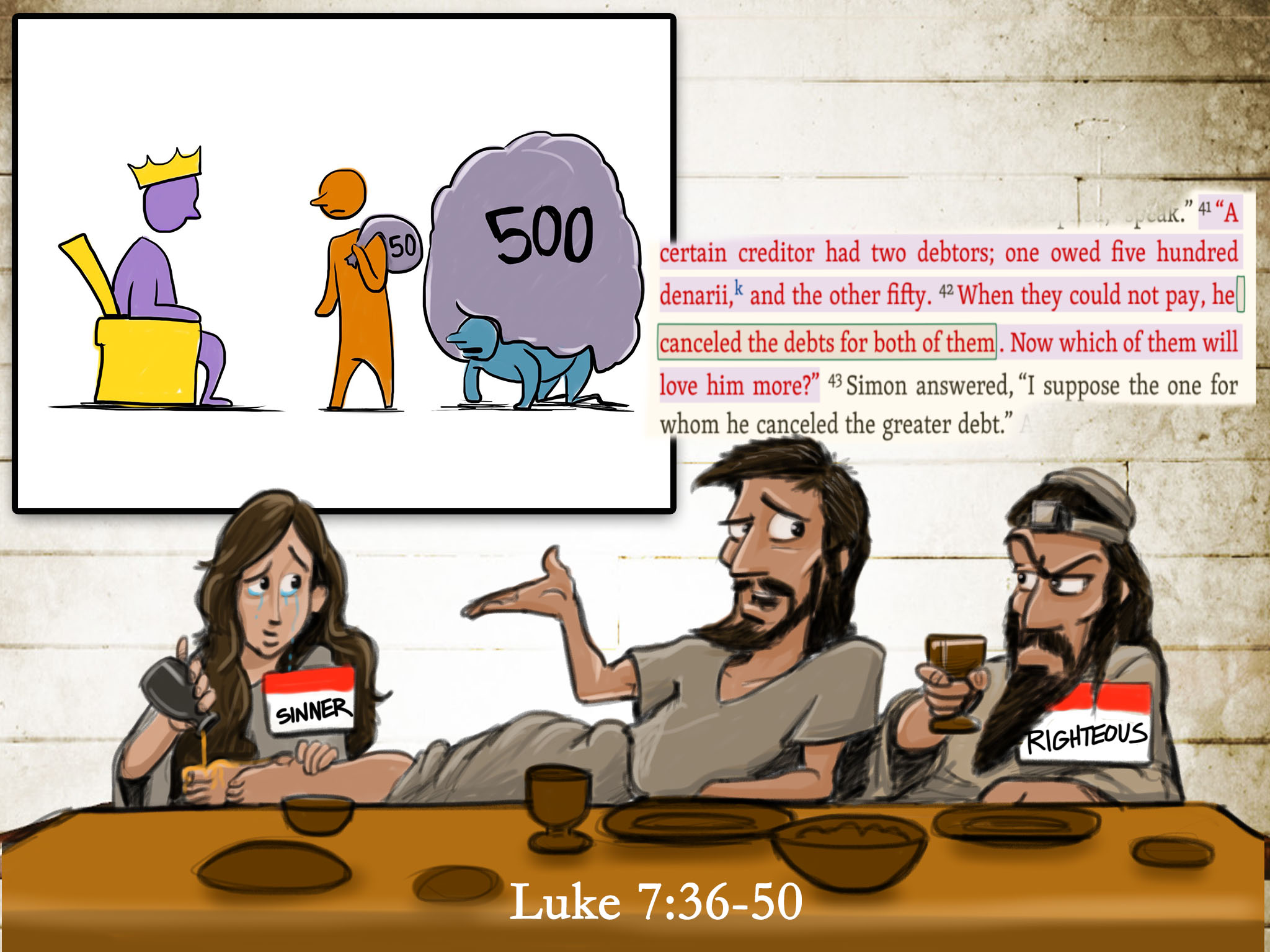
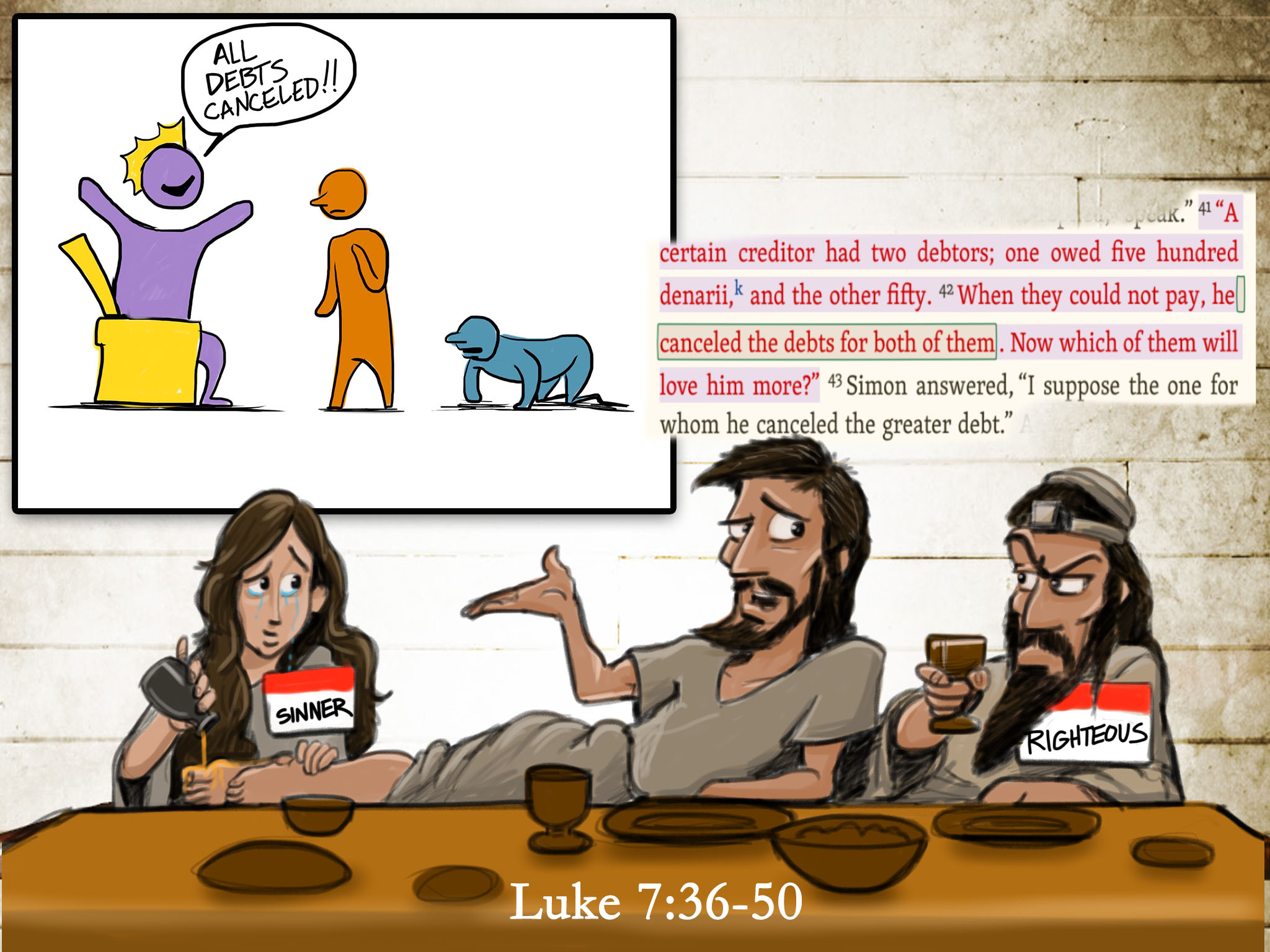
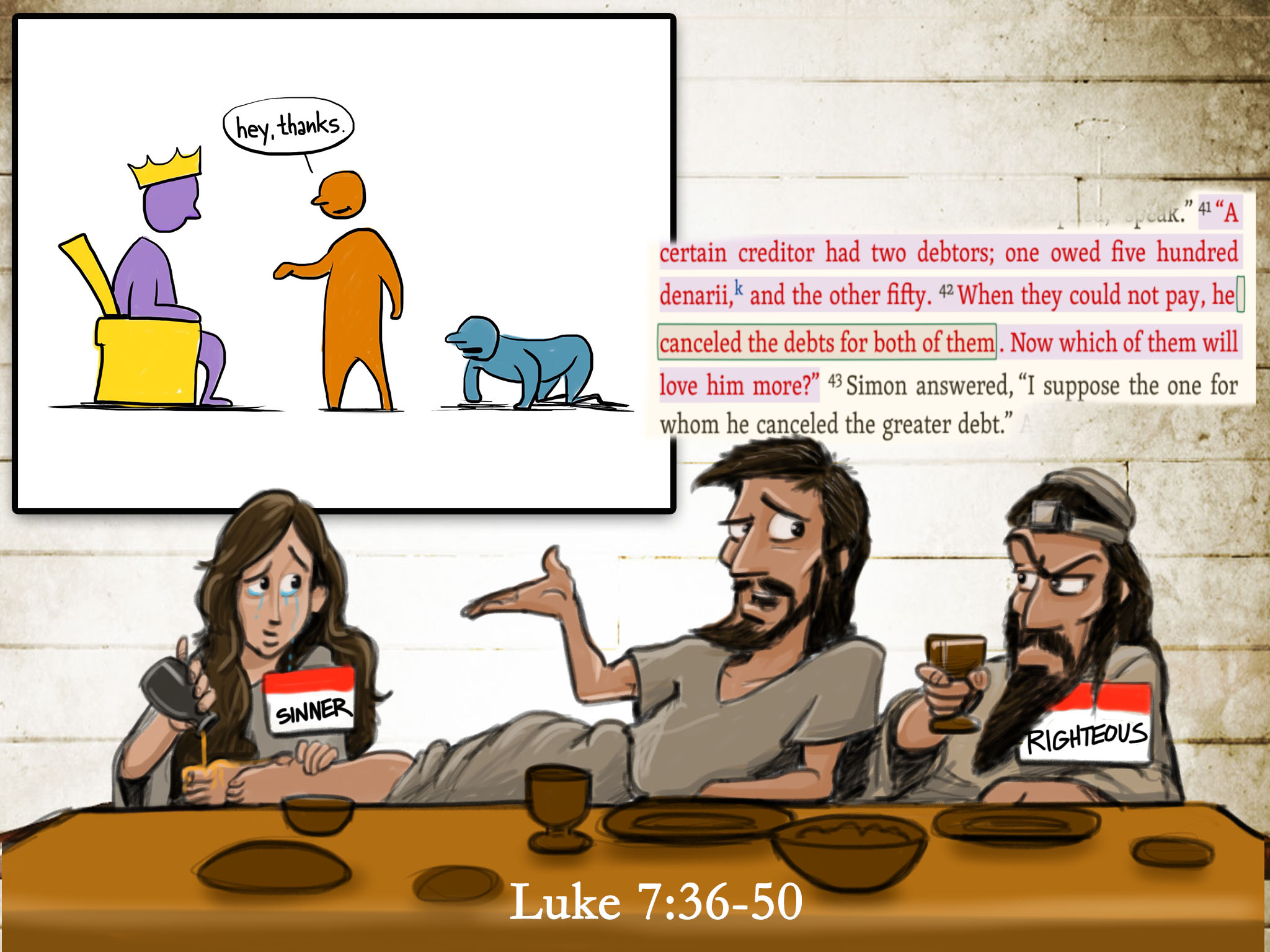
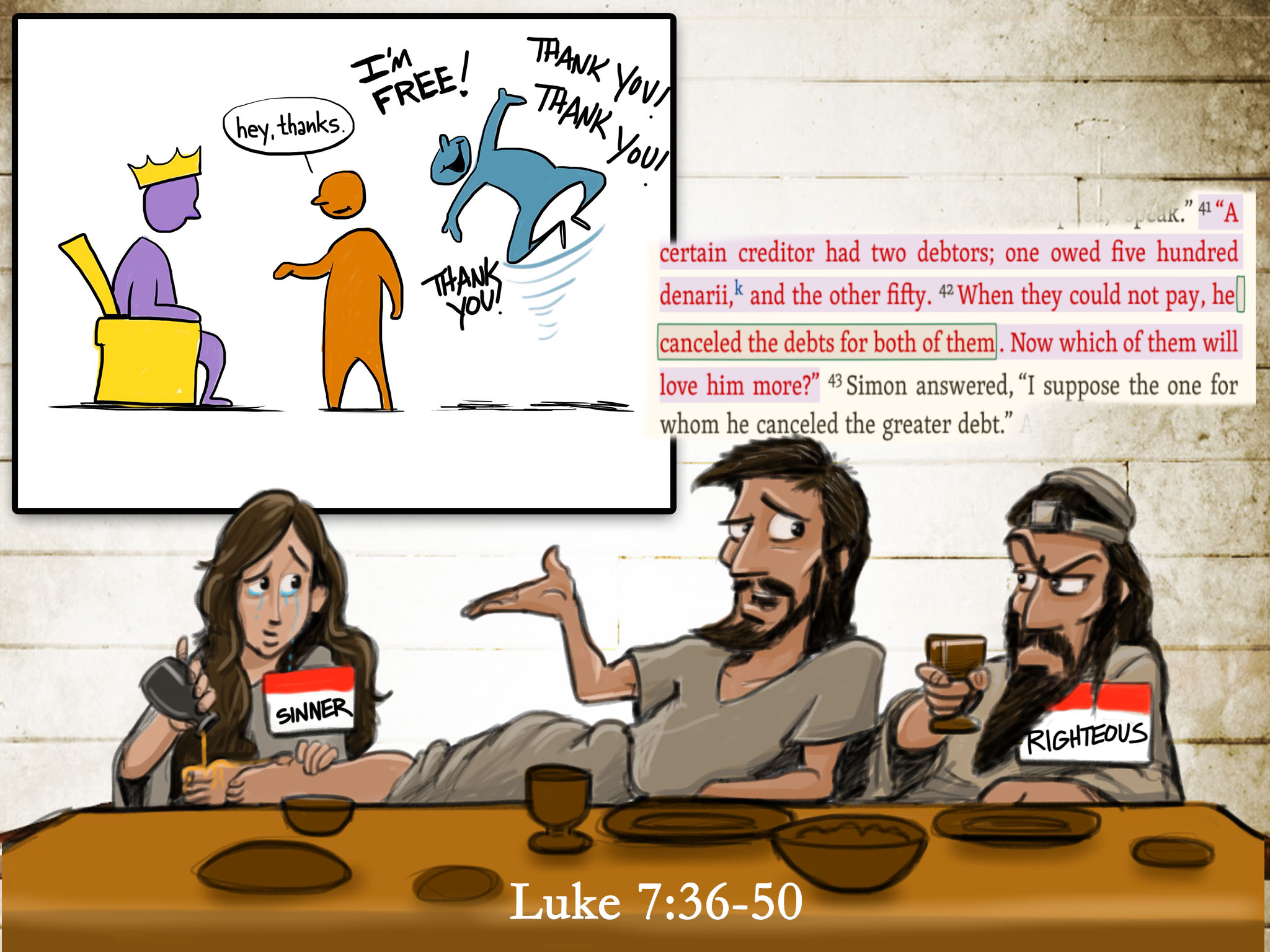
Then Jesus offers a painful review of the “fruit” of their actions.
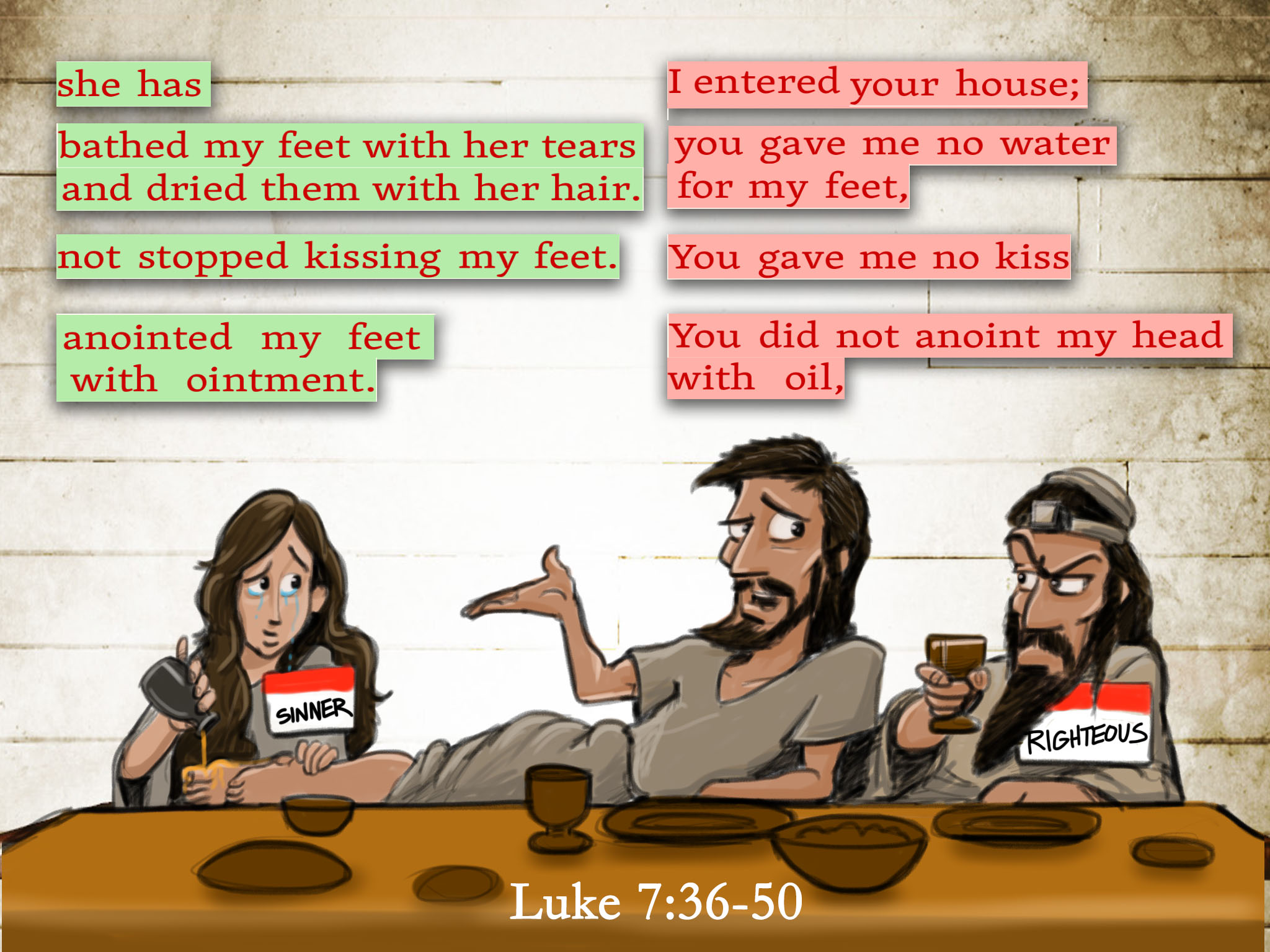
Ouch!
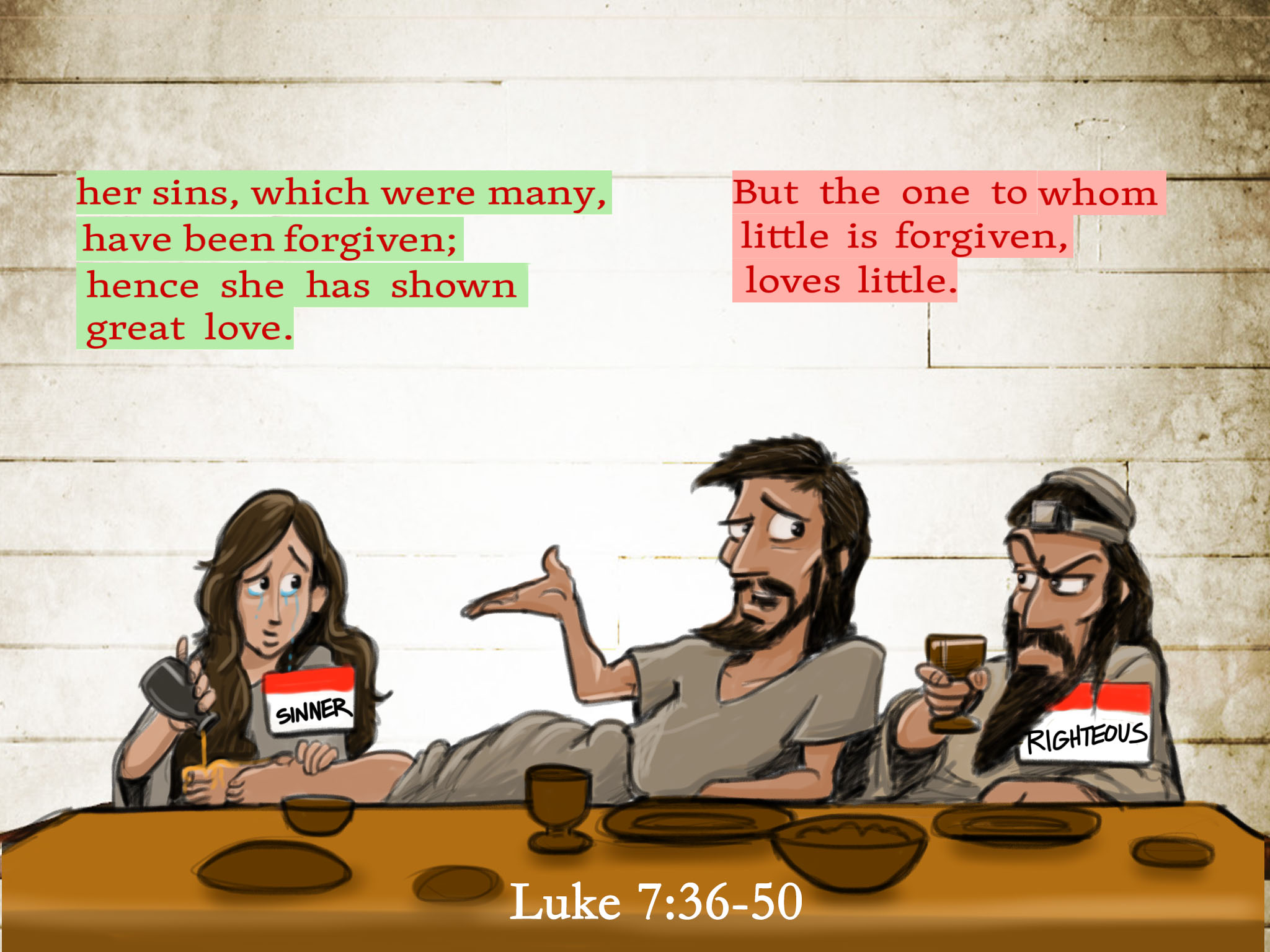
Perhaps Simon’s problem was that he did not acknowledge that even a “little” debt is still SIN. Like the Apostle Paul said in Romans 3:23, “all have sinned and fall short.” Then in Romans 3:24, he said, “all are justified by his grace as a gift.”
Through the eyes of grace it is impossible to look upon another human being as “less than” us because they are a “sinner.” We are all saints and sinners. We are all in need of saving. We have all been given the gift of God’s grace and salvation.
What if we treated each other as equals, each being beautifully broken-and-redeemed saint/sinners?
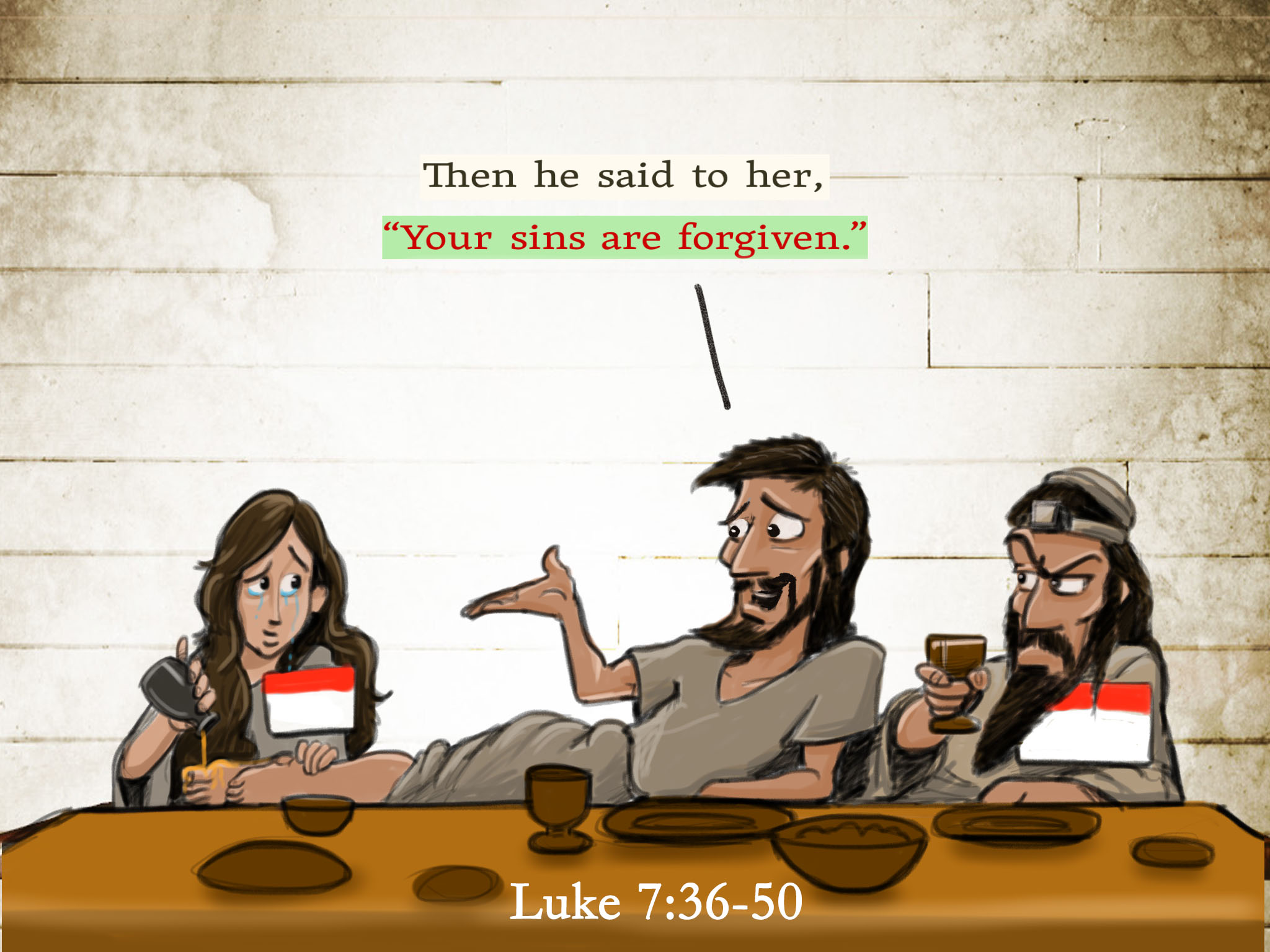
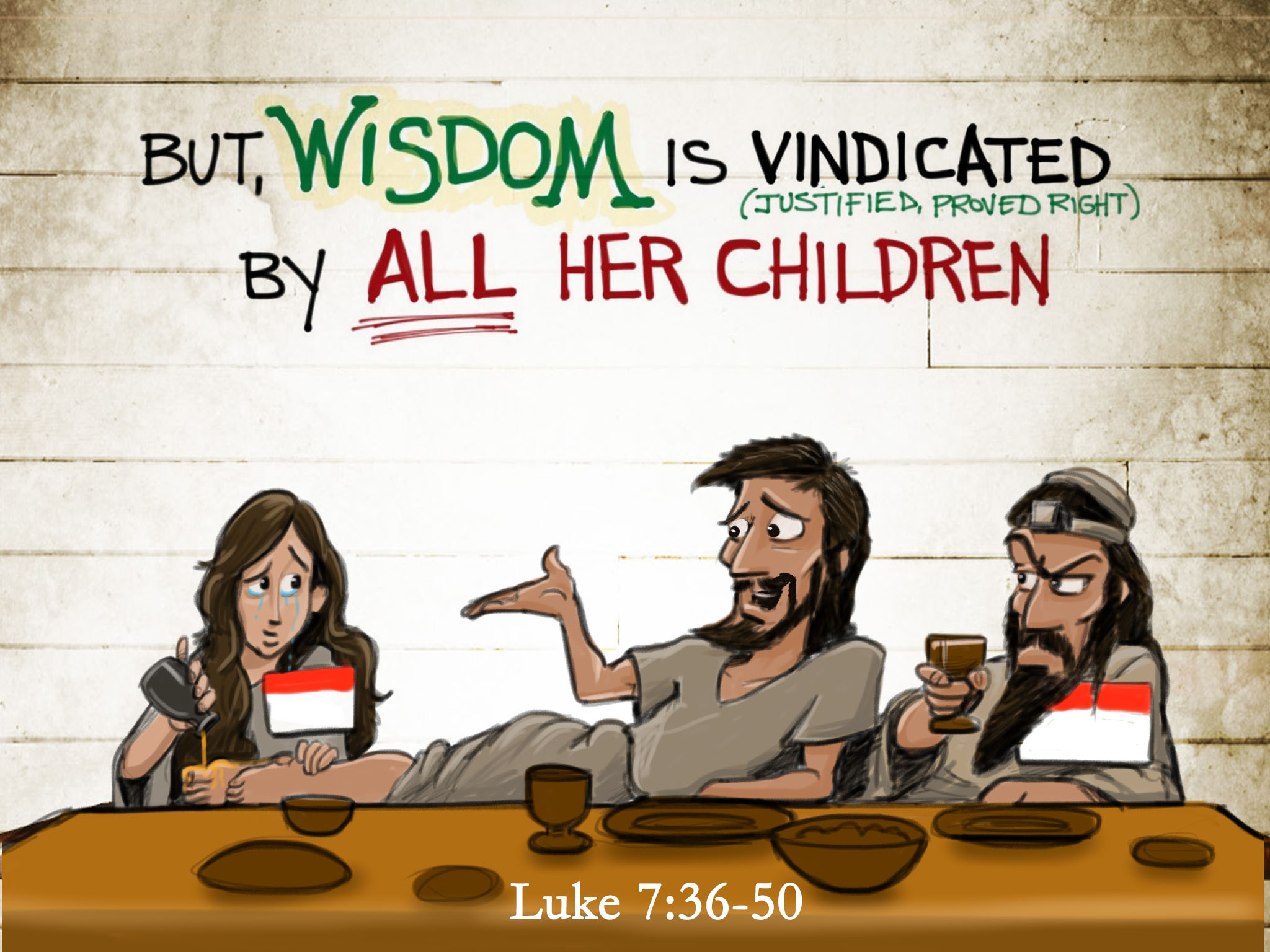
Study Luke with Me!
at the Art Pastor’s Network
videos
visual commentary
exclusive content
go at your own pace
community

